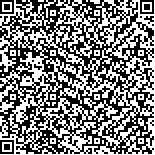本文已被:浏览 261次 下载 225次
Received:October 27, 2023 Published Online:August 20, 2024
Received:October 27, 2023 Published Online:August 20, 2024
中文摘要: 目的 探讨基于根因分析法的预见性护理品管圈活动对降低阴道分娩产妇产时出血量的应用效果。方法 建立品管圈,将活动主题确定为“降低产妇产时出血”, 选取南京大学医学院附属鼓楼医院2022年3月14日至24日阴道分娩的43例产妇作为对照组,2022年9月5日至15日阴道分娩的43例产妇作为观察组。对照组采用常规护理方法,观察组采用基于根因分析法的预见性护理。比较两组产时出血发生率、出血量、会阴侧切率比及助产士的综合能力评分。结果 对照组9例发生产时出血,观察组6例发生产时出血,两组产时出血发生率差异无统计学意义(20.93% vs 13.95%, χ2=0.727,P=0.394)。观察组出血量较对照组显著降低 [(532.3±138.9) mL vs (678.6±214.5)mL, t=3.754, P<0.05)。观察组会阴侧切率低于对照组,但差异无统计学意义(16.28% vs 25.58%, χ2=1.124 P=0.289)。结论 基于根因分析法的预见性护理的品管圈活动能够降低阴道分娩产妇产时出血量,同时减少子宫收缩乏力、会阴侧切引起的产时出血风险,提高助产士的综合能力。
Abstract:Objective To explore the application effect of anticipatory care quality control circle (QCC) based on root cause analysis on reducing intrapartum hemorrhage in vaginal delivery women. Methods A QCC was established and the theme was set as “reducing postpartum hemorrhage”. At the Nanjing Drum Tower Hospital, 43 parturients who delivered vaginally from March 14 to 24, 2022 were selected as the control group, and 43 parturients who delivered vaginally from September 5 to 15, 2022 were selected as the observation group. The control group received routine nursing methods, while the observation group received predictive nursing based on root cause analysis. The incidence of postpartum hemorrhage, bleeding volume, perineal lateral resection rate, and the comprehensive ability score of midwives between two groups were compared. Results Nine people in the control group experienced bleeding during childbirth (20.93%), while 6 people in the observation group experienced bleeding during childbirth (13.95%). The difference in the incidence of postpartum hemorrhage between two groups was statistically significant (χ22=0.727, P=0.394). The bleeding volume in the observation group was significantly reduced compared to the control group [(532.3 ± 138.9) mL vs (678.6 ± 214.5) mL,t=3.754, P<0.05]. The perineal lateral resection rate in the observation group was lower than that in the control group (16.28% vs 25.58%, χ2=1.124, P=0.289). Conclusion Anticipatory care based on root because analysis can significantly reduce the amount of postpartum hemorrhage in vaginal delivery women, reduce the risk of postpartum bleeding caused by uterine atony and perineal lateral incision, and improve the comprehensive ability of midwives.
keywords: Quality control circle Vaginal delivery Intrapartum hemorrhage Root cause analysis Anticipatory care
文章编号: 中图分类号:R714.46 文献标志码:B
基金项目:江苏省十四五卫生健康科教能力提升工程〖CD*2〗妇产医学创新中心(CXZX202229);南京鼓楼医院新技术发展基金(XJJFZJJ202037)
引用文本:
